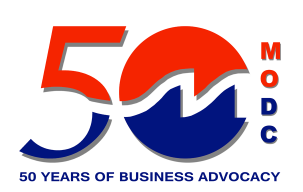IMMEDIATE RELEASE
February 4, 2016
Contact: Caryn Shinske (609) 984-1795
Lawrence Hajna (609) 984-1795
Bob Considine (609) 292-2994
CHRISTIE ADMINISTRATION ANNOUNCES NOAA GRANT TO DEVELOP COASTAL RESILIENCY PLAN FOR MONMOUTH COUNTY TOWNS
NEARLY $900,000 COMMITTED TO ADDRESS IMPACTS OF COASTAL HAZARDS IN TWO RIVERS REGION OF NORTHEAST MONMOUTH COUNTY
(16/P6) TRENTON – The Christie Administration today announced that the National Oceanic and Atmospheric Administration (NOAA) has awarded New Jersey a nearly $900,000 Regional Coastal Resilience Grant to help communities in 15 municipalities in northeastern Monmouth County develop a regional plan to address the impacts of coastal hazards and storm surge.
The planning project, called New Jersey Fostering Regional Adaptation through Municipal Economic Scenarios (NJ FRAMES), partners the Department of Environmental Protection’s Coastal Management Program with the Jacques Cousteau National Estuarine Research Reserve (JC NERR), the Louis Berger Group, the Rutgers Climate Institute and the Borough of Oceanport as the representative of the Two River Council of Mayors.
Project partners will use a scenario-based approach to help the Two Rivers Council determine and understand the range of costs and benefits of planning resiliency decisions in communities surrounding the Navesink and Shrewsbury rivers. Using a vigorous public stakeholder process that includes the visions of the involved communities, the NJ FRAMES project is expected to produce a plan identifying independent and regional measures that maximize efforts to improve resiliency.
“Addressing flooding hazards for New Jersey’s coastal communities is a critical component of the Christie Administration’s plans to enhance flood resiliency statewide,” said DEP Commissioner Bob Martin. “The expertise of coastal scientists, combined with the input of affected communities and residents will help us identify these important next steps to be taken to protect this region from the effects of devastating floods.”
Since Superstorm Sandy in October 2012, DEP’s Coastal Management Program has worked with an extensive network of partners to assist New Jersey coastal communities to reduce vulnerabilities to coastal hazards. That work further highlighted the need to focus on comprehensive regional planning as a vital strategy for building coastal resiliency.
“The challenges confronting our nation’s coastal communities are incredibly complicated – effective solutions are going to require strong science, ingenuity and collaboration if they are going to safeguard and ensure the future vitality of our economy and valuable natural resources,” said Dr. Jeffrey Payne, Acting Director of the NOAA Office for Coastal Management. “The projects that have been approved for funding represent opportunities to do just that. We are excited about what these partnership projects will accomplish at the local level and the positive impact this program will have on our nation.”
Projects recommended for funding by NOAA improve coastal risk assessment and communication, promote collaborative approaches to resilience planning, and better inform science-based decision making and implementation.
The Two Rivers Council of Mayors works to solve common issues in their communities located along the Shrewsbury and Navesink rivers. NJ FRAMES will build upon the cooperation of 15 communities in eastern Monmouth County, which comprise the Two Rivers Council of Mayors and other adjacent communities.
The mayors of these communities seek to take a regional approach to hazard mitigation by coordinating regional projects that build on existing protections in each of their towns: Eatontown, Fair Haven, Highlands, Little Silver, Long Branch, Middletown, Monmouth Beach, Ocean Township, Oceanport, Red Bank, Rumson, Sea Bright, Shrewsbury Borough, Tinton Falls and West Long Branch.
“This project is an outstanding opportunity for all of our towns to coordinate and directly engage local residents and business owners in order to create a regional plan that will allow us to become physically, economically, and socially more resilient,” said Oceanport Mayor Jay Coffey. “I am thrilled to lead this project on behalf of the Two Rivers Council of Mayors in partnership with Commissioner Martin and the other Two Rivers municipalities.”
“This award is thrilling for the Two Rivers Council of Mayors,” said Two Rivers Council Chairman Donald Burden, who also is Mayor of Shrewsbury. “As we are faced with the increasing likelihood of severe weather and repetitive flooding within the Navesink and Shrewsbury River Basin, these are the type of projects we need to implement in order to make informed decisions when planning for the future. Undoubtedly, our taxpayers will be the primary beneficiaries of this critical regional planning effort.”
For more information about NOAA’s Coastal Resilience Grants Program, please visit: https://coast.noaa.gov/resilience-grant/
For detailed descriptions of the six projects nationwide receiving NOAA Coastal Resilience Grants, including NJ FRAMES, please visit: https://coast.noaa.gov/resilience-grant/projects/





